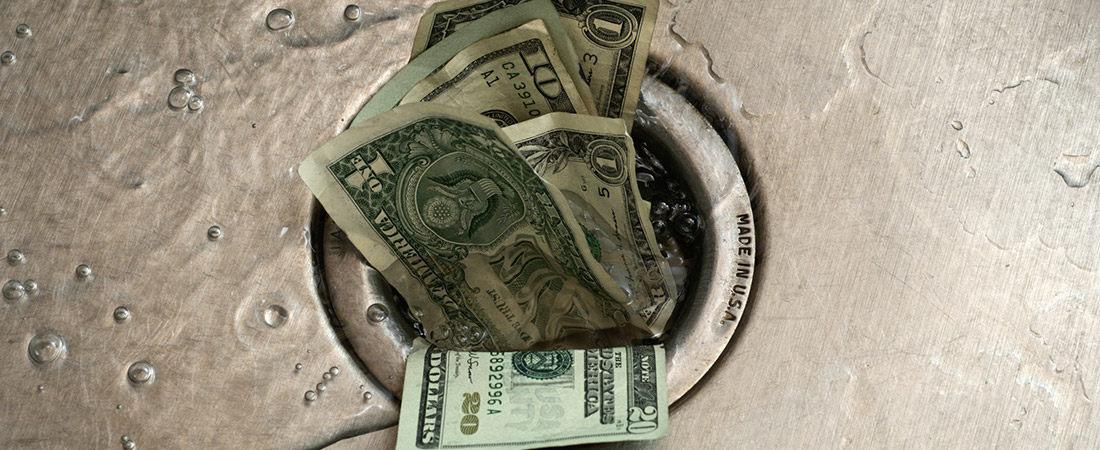Oct 17, 2017
5 Examples of How You May Be Using Your Savings Account The Wrong Way
When not used correctly, a savings account can end up hurting your finances.

A savings account seems simple enough: deposit money and earn a little interest while you save for future expenses. Still, when not used correctly, a savings account can end up hurting your finances.
Here are five ways you may be using your savings account the wrong way.
1. Using it to park all your cash
With interest rates as low as they are, keeping your cash in a savings account is akin to stuffing it in a mattress – at least as far as earnings are concerned. While it’s a good idea to keep some cash in a savings account – it’s quick and easy to access in case of emergencies, after all – it may not be the way to plan for the future.
Instead, keep enough in cash in your savings account to cover emergencies and the specific expenses you’re saving for – and invest the rest in stocks, bonds and/or ETFs that match your risk profile.
2. Not paying attention to the numbers
One savings account may appear to boast a high interest rate, but watch out – a lot of banks offer great introductory interest rates, only to lower them after a few months. Before opening an account, make sure you know the true interest rate, and for how long that rate will be in effect.
Also important: Fees. Many banks charge a set fee each year – say, $25 – plus an additional amount each month that your account falls below a certain balance. Also, most banks limit the number of withdrawals you can make each month. Each time you exceed that number you may be hit with a withdrawal penalty. If you have a small balance to begin with, these fees and withdrawal penalties could wipe out your account in a matter of months.
3. Using it to protect your money from inflation
With today’s interest rates, it doesn’t make sense to hedge against inflation by storing your money in a savings account. Here’s why: Assume you have $100 in a savings account that pays a 1% interest rate (pretty standard these days). After one year, you’ll have $101. Meanwhile, the inflation rate in the U.S. is projected to hit 2%, which means you’ll need $102 to compensate for the higher prices of goods and services.
With only $101 in your account, you will have actually lost some purchasing power by keeping your money in that low-interest account. Yikes.
The good news is that there are places to put your money that are still relatively low risk, but that offer the potential for better earnings,helping you to ease the inflation burden.
While many investors traditionally use stocks for inflation protection, exchange-traded funds (ETFs) offer a good alternative, especially for those trying to limit or diversify risk. Because ETFs are “baskets” of securities (rather than just a single stock), investors can effectively spread out their risk across companies, industries, sectors and even parts of the world. Keep in mind diversification is not a guarantee that your investments will be protected in a down market.
4. Using it like a checking account
Savings accounts are intended to provide a safe place to keep your money while you save for future expenses – whether that’s a dream vacation, emergency fund or a down payment on a car. If you end up using your savings account like a checking account, however, you may have a hard time ever reaching your savings goals.
Once you deposit money into your savings account, do your best to keep it there until you reach your goal. If you have trouble leaving that money alone, consider opening an account that isn’t linked to your checking/ATM/debit accounts so it will be harder to access for those impulse buys.
5. Using it to save for retirement
If you use your savings account to squirrel money away for retirement, you’re making a big mistake. That’s because the interest you earn in a savings account is next to nothing, which means that – even with the magic of compounding – your nest egg won’t grow enough.
There are better ways to save for retirement.
Here’s an example. Say you start with $1,000 in your savings account and add $500 a year for 25 years. Assuming a 1% interest rate, your account balance would be $15,545 after 25 years – $2,045 of which would be earnings.
Now, start with the same $1,000, but put that money in a tax-advantaged Roth IRA.
If you contribute the same $500 a year and earn a 5% (a realistic goal for IRAs), after 25 years, your account balance would be $28,443 you would have earned nearly $15,000 – more than seven times what you would have earned by keeping your money in a savings account.
Max out your contributions each year ($5,500 for 2017) and you’d have $279,000 after 25 years or more than $1.2 million after 50 years – good reasons to open an IRA today.
Are there other ways to save for your future?
Yes. Investing in the stock market could be an effective alternative to save for your financial goals, provided you follow a long-term and consistent investment strategy.
Related Articles

Saving vs. Investing: 2 Ways to Reach Your Financial Goals

How to Save Money: 45 Best Ways to Grow Your Savings

How to Set Up an Emergency Fund

How Much of Your Paycheck Should You Save?

How To Stop Impulse Buying

29 Side Hustles To Consider in 2024




